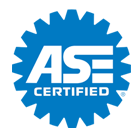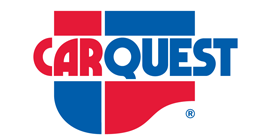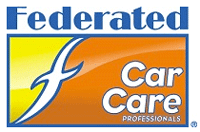A Real "Pane" (Window Maintenance and Repair)
Posted October 25, 2020 10:37 AMIt's pretty frustrating when your driver's window won't work. You can't get your food at the drive-thru without opening the door, have a tough time using the ATM from your vehicle, can't have that fresh breeze blowing through your hair as you listen to your favorite road tunes.
Plus, there's a safety factor. Your windows provide an escape route in case you need to get out and the doors won't work. Let's take a look at what's going on when your window won't operate.
Most vehicles these days have power windows. They have an electric motor in each power window and sometimes those fail. They often give you a warning that they're on their last legs by making a noise or hesitating, so if you get a sign like that, have a technician check it out. Loss of power can also be due to a blown fuse, a bad switch or faulty wiring.
All windows have something called a regulator that moves the glass up and down. They have a lot of moving parts in them which can break, become bent, rust or get out of alignment. The glass moves along a window track guide. Sometimes if the glass gets out of the track, it won't move up and down the way it's designed to do.
When you take your vehicle over to a repair facility, a technician can pinpoint the cause of your malfunctioning window. Often it involves having to remove the door panel to gain access to the components inside. But when everything's working right, you'll be able to throw that annoying inconvenience right out the window.
All Things Automotive & Diesel Service
1997 Walton Ave #C
Idaho Falls, ID 83401
208-523-3903
See the Light (Automatic High Beam Dimmers)
Posted October 18, 2020 2:20 AMIt's happened to all of us. We're driving down a highway at night and over a crest appears a car with its high beams blazing. You are momentarily blinded, hoping the other driver will switch them to their low beam setting and restore your vision.
Not only do we not appreciate being blinded, face it; we don’t want to be that other driver, either. You know, the one who forgets to turn down their high beams.
Why do we want high beams in the first place? They can improve safety when used correctly, giving drivers more reaction time since they can see farther down the road. But research has found many drivers either don't use them or, when they do, they frequently forget to switch to low beams. Enter the automatic high-beam dimmer.
The quest for the perfect one began back in the 1950s, General Motors invented something it called the "Autronic Eye." It was a phototube which sat on the dashboard and turned down your beams when it saw other headlights. While touted as being the biggest advance in night driving safety in 30 years, it didn't work all that well. But as technology got more advanced, systems improved.
Today's automatic high beam dimmers usually have a camera in the rear view mirror (pointing forward). When the camera sees lights, software in the system's computer attempts to determine the source of the light, whether it is an oncoming vehicle, taillights, ambient city lights, street lights or the reflection off of a street sign. It then adjusts the headlights to operate high beams if appropriate or a less-blinding mode if they’re not.
Some automakers are striving to make their headlight systems smarter and safer by developing lamps that can avoid blinding oncoming drivers by means other than simply dimming them. One idea? Splitting the beams so they will block just the portion that shines into the eyes of oncoming drivers.
It's a long way from the Autronic Eye.
All Things Automotive & Diesel Service
1997 Walton Ave #C
Idaho Falls, ID 83401
208-523-3903
A Turn for the Worse (Using Turn Signals)
Posted October 11, 2020 9:31 AMDistracted driving is bad, you know that. Daydreaming, talking on the cell phone, putting your makeup on in the rear view mirror. All bad. But there's something else that causes more than twice as many accidents, according to a recent study. And that's people who don't use their turn signals.
Maybe you're one of them. One survey said nearly a quarter of drivers were just too lazy to use their turn signals. Others said they didn't use them because they weren't really necessary. Traffic laws may dictate otherwise, but statistics show police don't write that many tickets for turn signal violations.
You may have encountered the driver who cuts into your lane without signaling a change. Often, that person does it deliberately to catch you off guard so you won't invade his or her space. And when it comes to young drivers using turn signals, one insurance company survey showed more than two-thirds of those they talked to admitted it wasn't their regular practice.
Knowing that, you may wonder why you should use your turn signal. The reason is simple. It lets other drivers know what you plan to do. Driving it tricky enough with all the moving parts on the road. The more you know what other people are doing, the more you can prepare for that with the way you drive.
How many times have you seen someone turn left without putting their turn signal on? That's a leading cause of rear-end accidents. Not only does using your turn signal promote safety, it also shows courtesy to other drivers.
There are some drivers who don't use turn signals because their turn signals don't work. What a lousy excuse! All of the safety equipment in your vehicle should be working; if it isn't, head over to your repair facility. Often it's as simple as a burned out bulb or a broken wire.
Finally, the number one reported reason for not using a turn signal is that drivers just forget to do it. (And the ones who DO use their turn signals and forget they're on? We won't even go there.)
Engineers put turn signals on vehicles for a reason. They help drivers communicate with other drivers. Using them could save accidents… and lives.
All Things Automotive & Diesel Service
1997 Walton Ave #C
Idaho Falls, ID 83401
208-523-3903
The Right Stuff (Choosing Replacement Parts)
Posted October 4, 2020 9:26 AMLet's face it. Vehicles are complicated machines, each having thousands of parts. And since they're subjected to heat, cold, vibrations, bumps and much more, these parts wear out and need to be replaced.
When your service advisor says you need a new part, you may have many options. Let's say you need a new muffler. One choice would be to get exactly the same part that was installed when the vehicle was manufactured. The advantages are that it will perform the same way as the one it's replacing and will likely last about the same amount of time as the original.
Some mufflers are made by the same companies that supplied the automaker when your vehicle was new (they call that an OEM part—Original Equipment Manufacturer). And often those are the same as the part you'd buy from a dealer. A reputable vehicle service facility will know which ones these are because they replace mufflers all the time and do their homework.
The good news is there are many different mufflers available from several manufacturers. These are called aftermarket parts. Some of them may use different metals or a different construction technique. Some may sound a little sportier while some may make your engine perform better. Your service advisor will discuss what your driving habits are and help choose the part that's best for you.
You may be able to get a part that's better than the one originally installed. Here's an example. A repair shop discovered one owner's vehicle had developed cracks and leaks in the hoses that attach to the heater core. They were made of plastic, and heat and pressure had caused the originals to crack. The service advisor recommended they replace it with an aftermarket part that was made of aluminum instead, one that was more durable than the original part.
Some aftermarket parts cost more, some cost about the same or less. Depending on how and where you drive and what you want out of your vehicle, you can decide to buy more economical parts which might be the best fit for your needs. Or you may decide to upgrade to a better, more expensive part.
All Things Automotive & Diesel Service
1997 Walton Ave #C
Idaho Falls, ID 83401
208-523-3903















